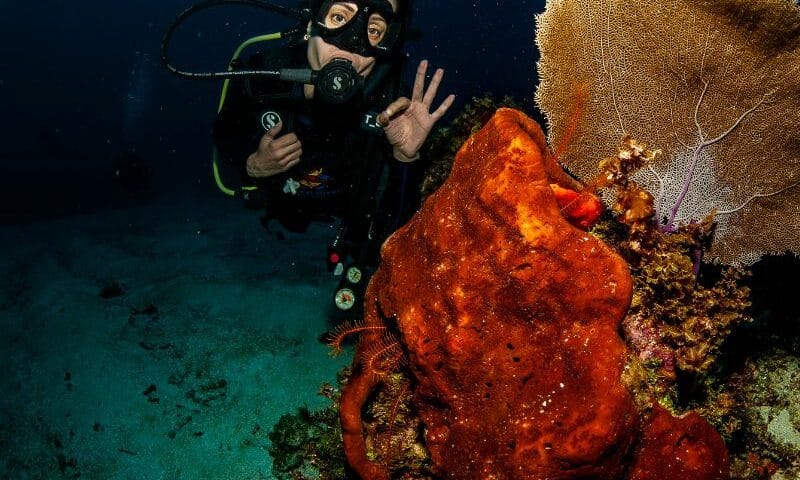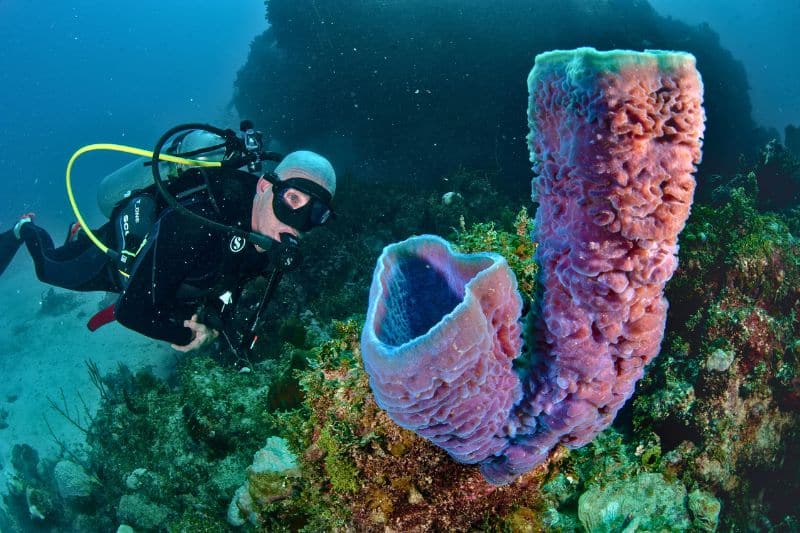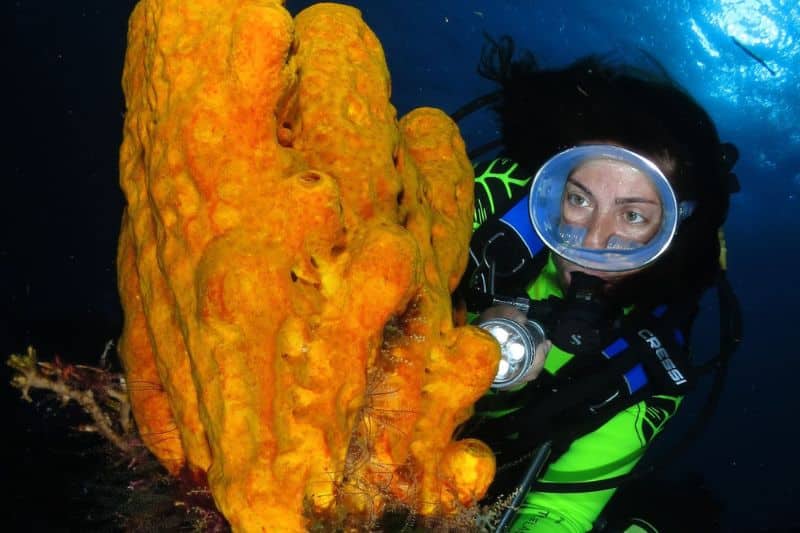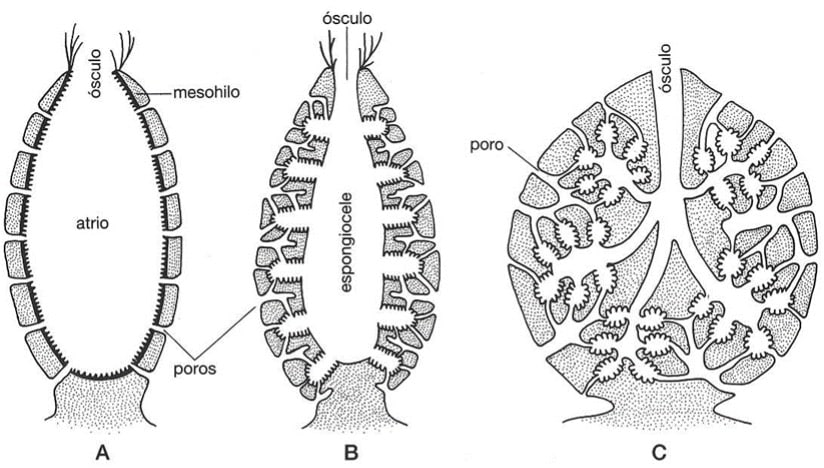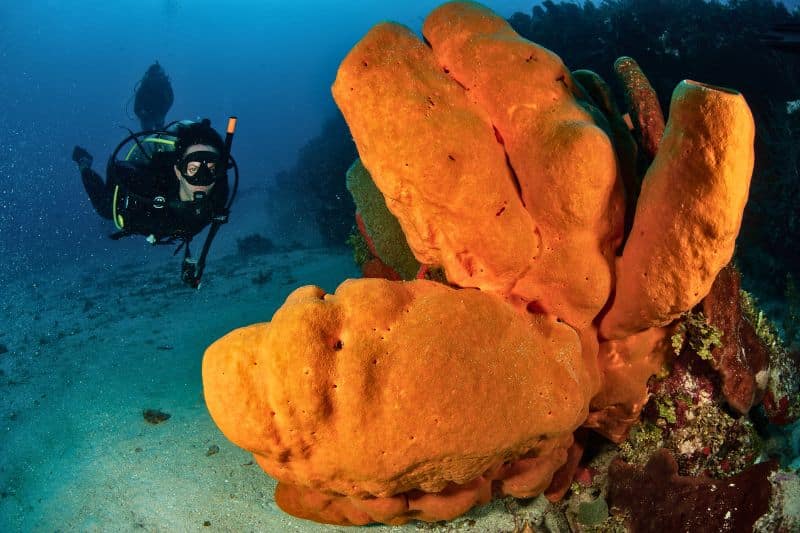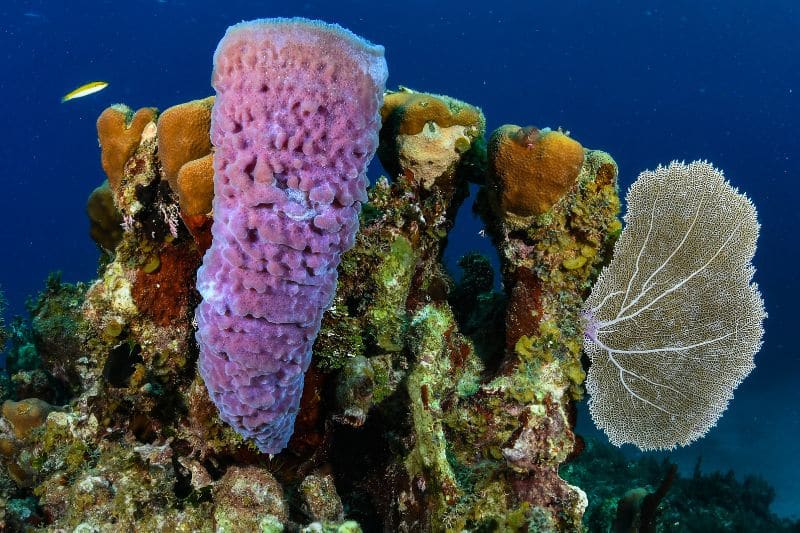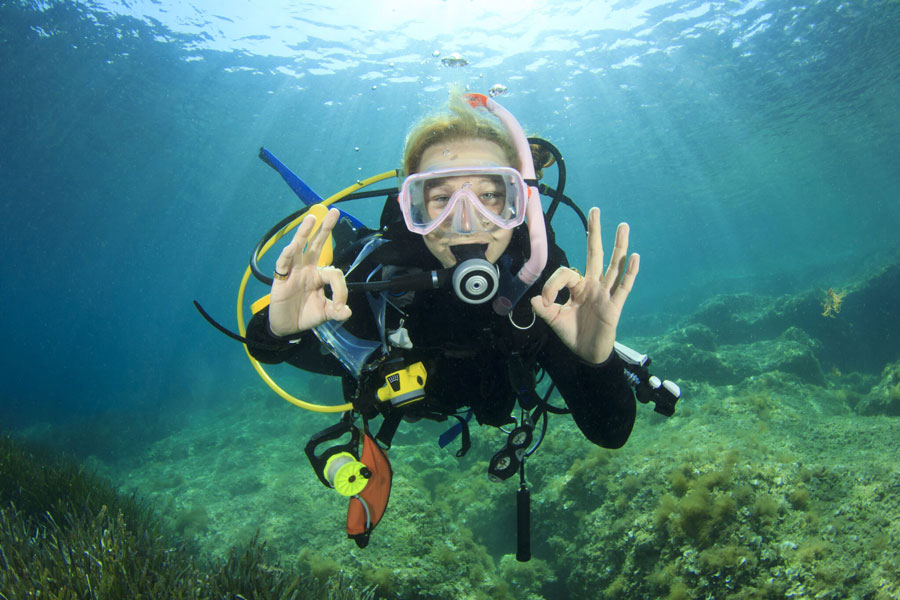3. Fun Facts and Fascinating Tidbits About Coral Sponges
Get ready to have your dive mask blown off, these sea sponge facts are next level.
They’re not plants
For years, people thought they were just sea veggies stuck to a rock.
Nope. They’re invertebrate animals.
They move. Slowly, but they move.
They look like underwater statues, but some coral sponges actually crawl, creeping in search of food or a better spot to chill.
They move so slowly, scientists didn’t even notice until much later.
No organs.
No eyes. No brain. No heart. And yet, they work.
They rely on specialized cells:
Choanocytes catch food.
Amoebocytes distribute nutrients, clean house, and even help with reproduction.
They’re regeneration masters
Cut one into pieces? No problem, each chunk can grow into a brand-new sponge.
They’re like floating chemistry labs
Sponges produce compounds that can treat diseases.
Antibiotics, antivirals, anticancer agents…
Yep, scientists are drooling over these ocean creatures.
They can live pretty much anywhere
Tropical oceans. Icy abyssal depths. Even freshwater.
If there’s water, there might be a sponge.
They reproduce however they want
Sexual? Sure. Asexual? Absolutely.
Budding, fragmentation, and genetic parties with eggs and sperm in the water.
They have symbiotic buddies
Algae, cyanobacteria, call it underwater mutualism or friends with benefits.
Some coral sponges form win-win partnerships. They give shelter; the microorganisms return the favor with nutrients through photosynthesis.
They communicate.
No mouth, no brain, but coral sponges talk chemically.
“Hey, danger nearby.”
“Hey, food over here.”
Humans have used them for centuries
Before synthetic sponges, we used natural ones for bathing and cleaning.
Soft, absorbent, and totally natural, why wouldn’t we?
Some glow in the dark
Yep, bioluminescent sea sponges are real. They light up like underwater fireflies.
They survive anywhere
Some thrive around hydrothermal vents.
Extreme heat, acidic water, no big deal.
They’re just there, totally unbothered.




